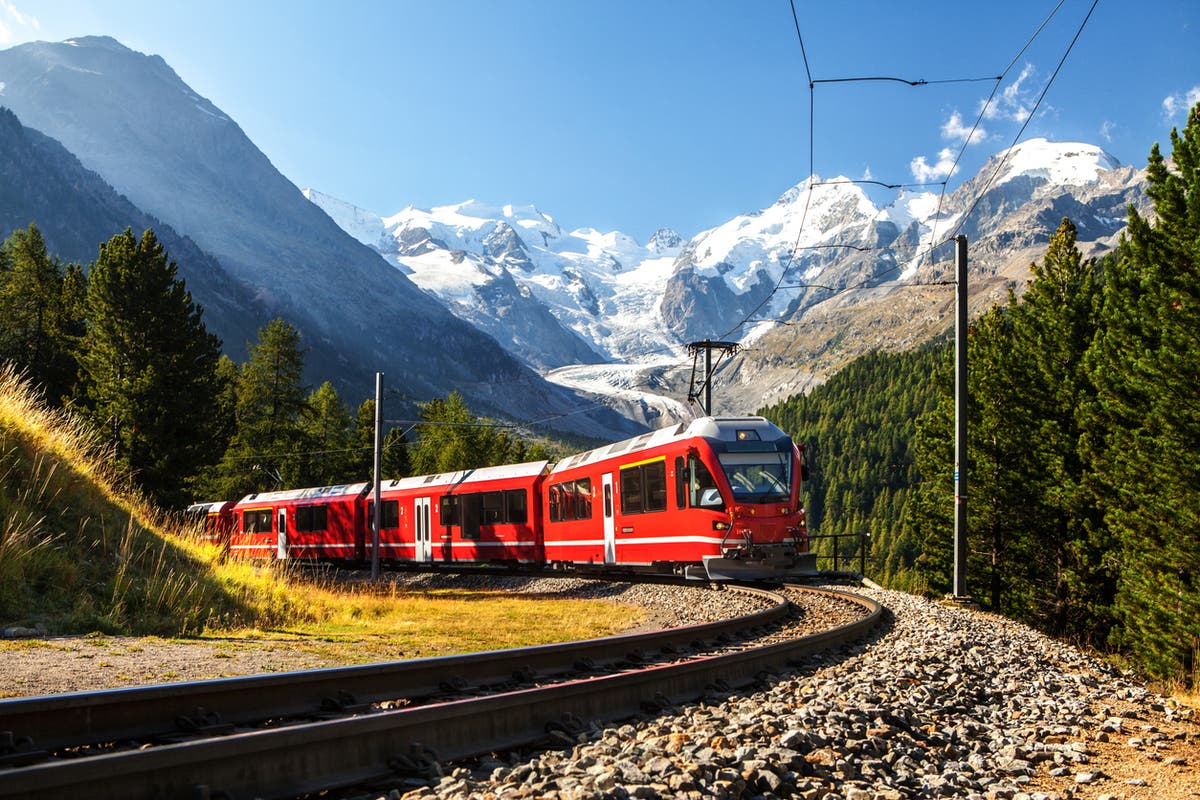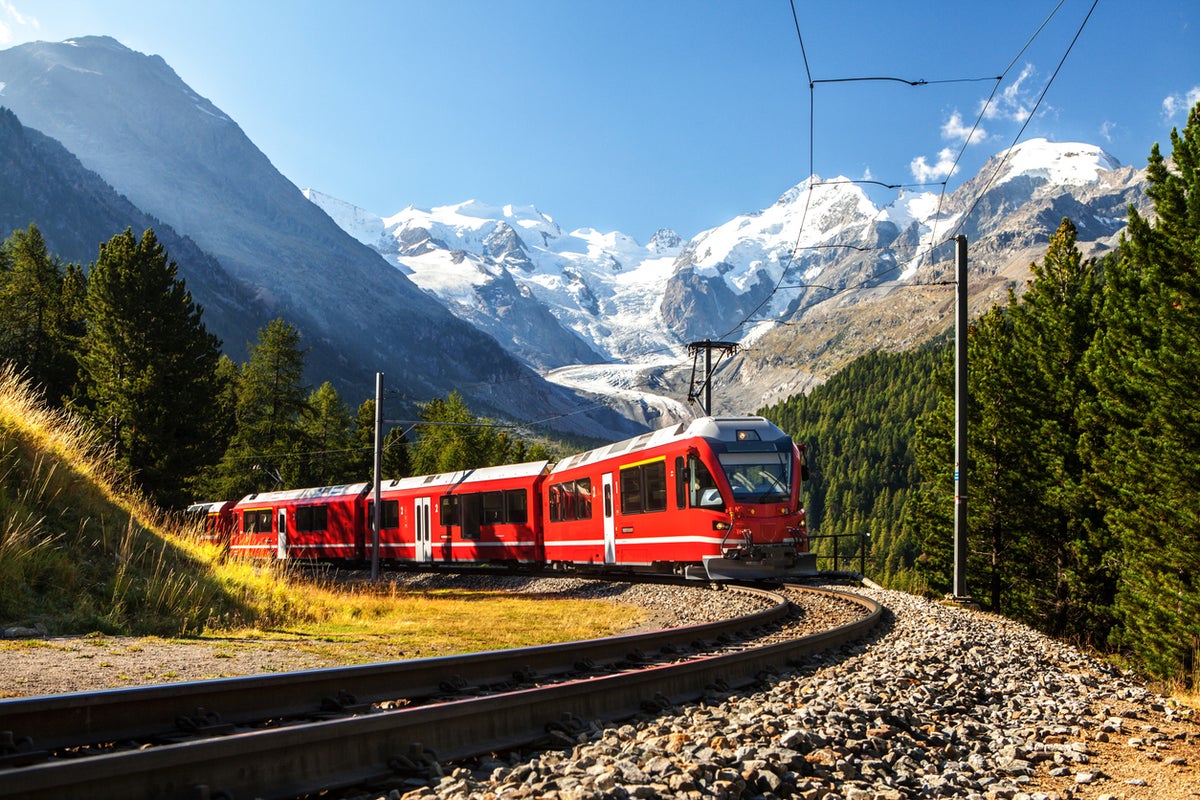Consider monstrous glaciers, Tiffany-blue lakes, time-trapped mountain villages, Unesco-listed winelands and grand dame hotels – and you’ve only scratched the surface of Switzerland. This is a country of superlative Alpine beauty, with sights connected by hairpin roads, screw-shaped rail tunnels and heart-soaring cable cars. A huge part of the country’s appeal is the journey itself, not the destination.
Come for city life too, from riviera glamour in Zurich and watch shopping in Geneva, to art in Basel and luxury on tap in ski resorts Zermatt, Verbier, St Moritz and Gstaad. Ride a gourmet cheese train from Montreux, a horned dairy cow in Appenzell (because, why not?), or chuck yourself out of a helicopter above the notorious Eiger. All quirks are catered for.
Current travel restrictions and entry requirements
Travellers arriving in Switzerland are no longer subject to any Covid-19 restrictions. No proof of vaccination, recovery or testing is required for entry and the country has done away with all mask wearing and social distancing.
Best time to go
Arguably, it’s the ever-changing four seasons carousel that makes Switzerland so darn appealing. Come in winter for feather-light powder, snow globe Christmas markets and as-good-as-it-gets Alpine adventures in quaint mountain eyries. February and March herald carnival season, with Fasnacht an eye-poppingly macabre event of all-night revelry that belies Switzerland’s supposed conservatism (the one in Basel is particularly raucous).
The spring thaw around April brings with it the arrival of hut-to-hut hiking and the start of inner city swimming rituals – the river waters in Bern, Basel and Zurich are almost good enough for Evian to bottle. Peak summer is for ‘schwingen’ fests (seriously fun bouts of Swiss Alpine wrestling), then the nation unites on Swiss National Day on 1 August. Autumn, meanwhile, is for the wine harvest around Lake Geneva. There are some 1,500 producers here, with the steeply-tiered vineyards of Lavaux in particular containing fabulous, almost-secret cellars.
Top regions and cities
Zurich
Many people’s first impressions of Switzerland are at Zurich Airport – one of the world’s slickest – and there’s no let-up in the positive vibes afterwards. This is a city of Medieval nooks and crannies, with Gothic churches, a spectacular lake and river setting, and the smartest restaurants, bars and shops in the Alps. Bahnhofstrasse is the country’s answer to Fifth Avenue, home to Confiserie Sprüngli, a wonderland of luxemburgerli (squishy macarons) and chocolate truffles, while the Niederdorf is storybook central with its crooked streets, squares and glorious riverside promenade. In summer, swim with the after-work crowd at a historic lido, or pop into Kunsthaus Zurich gallery or Cabaret Voltaire – ground zero for the Dadaist art movement. For here-and-now trends and nightlife, make for Zurich West or Langstrasse.
Geneva
Home of the Red Cross and the United Nations, the businesslike capital of French-speaking Switzerland can come across as all work and no play. But the jewel of the country’s Lake District is fun for more than just CEOs and diplomats. Get lost in its pedestrian Old Town, a mini maze of cute squares and neo-classical cathedrals, then scale the heights of Cathédrale St-Pierre, where Protestant John Calvin once preached. Time is a given in Geneva – it’s the world’s historical horology capital and home to more spiffy watch ateliers than anywhere else. While away a few hours at the Patek Philippe Museum, which charts the story of 500 years of Swiss watchmaking. Beyond the city limits, there’s also CERN, the mind-boggling particle physics laboratory; the creased hills of Saint Cergue; and enough lakeside vineyards and castles to make you wish you’d stayed longer.
Graubunden
With its postcard good looks, this is the Switzerland of Heidi illustrations. Grazing cows pose with oversized bronze bells; dairy farmers and cheesemakers prepare feasts for hikers’ mountain huts; and goatherders ply ancient mountain tracks from silvery lakes to snaggletooth peaks. Primarily, this canton attracts outdoor adventurers; the mountain-cradled resorts of Laax-Flims, Lenzerheide, Arosa, Disentis, Klosters and Davos fill year-round with hikers, bikers, paragliders, skiers and snowboarders worked up into a frenzy. To the south, the contours wiggle towards the Engadine Valley, home to swit-swoo St Moritz, with its catwalk fashion designer boutiques and – for hardcore toffs – horse polo on ice.
Bernese Oberland
Brimming with many of the country’s sock-knocking Alpine experiences, the Bernese Oberland is Switzerland at its most captivating – it appears before the mind’s eye fully coloured-in, epic and wild. Swarms of travellers beeline to Interlaken, but the vast glaciers and deep-cut valleys of the Jungfrau, Monch and Eiger are better savoured when staying in the squirreled-away towns of Grindelwald, Wengen or Murren. Ride a cogwheel railway inside a mountain to the Jungfraujoch (aka the “Top of Europe”). See the purpose-built 007 location of On Her Majesty’s Secret Service atop the Schilthorn. Dangle on a via ferrata above the Aletsch Glacier, the largest in the Alps. Or hike through Lauterbrunnen’s meadows, which once inspired J.R.R. Tolkien to create Middle Earth – with a little imagination you could find yourself staring into an elvish valley. And from here, the country’s most famous peak, the Toblerone-shaped Matterhorn, is to the south in the swish, car-free resort of Zermatt in Valais.
Lake Lucerne
All journeys in impossibly-pretty Lucerne should begin and end with a paddle steamer cruise on the Vierwaldstetersee, a puzzle-piece-shaped lake backed by jaw-dropping precipices and cliff-hugging cable cars. There’s great hut-to-hut hiking, historic railways, mountain-biking and wild swimming and, with a rolling topography of high valleys, some of the prettiest Alpine villages in the country. Two highlights are Stoos and Engelberg, the latter home to the Titlis Cliff Walk, the highest suspension bridge in Europe. At the lake’s tip, the road zigzags up to the resort town of Andermatt, with its five-star hotels and golf courses, before disappearing into the Gotthard Tunnel, the portal to the country’s south.
Best under-the-radar destinations
Bern
It might be the capital, but does anyone ever mention Bern? Hardly. But Switzerland’s too-often-overlooked capital has a wealth of attractions, from a beautifully preserved Old Town, with its astronomical Zytglogge Clock and Swiss Parliament, to inner city swimming or rafting the Aare River. Once the haunt of Albert Einstein – cue a museum in tribute – it remains a laid-back place for serious thinkers and there are plenty of café-lined squares and gardens to chew over Switzerland’s notoriously Daedalian politics. Another highlight: Bern is also known as the city of fountains, so expect plenty of spritzing stunners.
Ticino
People often speak of Switzerland’s German and French cultures, but its Italian culture is all too rarely mentioned. Ticino, the country’s only Italian-speaking canton, delivers a gutfull of dolce vita flavours: think mountaintop monasteries, crystal-clear wild swimming spots, and grotto-style restaurants serving pizza, pasta and gelato. Highlights abound: there’s Locarno and Ascona, two of the country’s most sophisticated lakeside towns; Bellinzona, with its three grand Unesco castles crowned with turrets and roller coasting ramparts; and the Verscaza Dam, home to a ludicrous bungee jump usually soundtracked by a barrage of expletives.
Appenzell
While it’s well-travelled by the Swiss, this northeastern pocket of gentle mountains, cheese farms and wild meadows is an almost unknown to Brits – and yet it’s distinguished from what you see elsewhere in Switzerland because it remains deeply-rooted in medieval tradition. (Fun fact: the women of Appenzell Innerrhoden were only allowed to vote for the first time in 1991). The town of Appenzell itself is the place to start a tour, but it’s the Alpstein massif, with its cliff-defying Aescher Berggasthaus and vermillion mountain tarn Seealpsee, that delivers the ultimate drama. For an unforgettable day hike with an in-your-face view, take the Kronberg Luftseilbahn from Jakobsbad, then amble back to the base station.
Best things to do
Drive the e-Grand Tour
In the shadow of Europe’s largest mountain wilderness, life-affirming road trips are not in short supply here. But a standout is Switzerland’s clean, green e-Grand Tour, a 1,000-mile route that absorbs a dense network of super chargers, Alpine passes and dozens of Unesco sights. Options are tenfold, but a highlights reel from Zurich might include: peacock-blue Lake Lucerne; the corkscrewing valley of Andermatt; and motoring the Furka Pass, where Sean Connery’s James Bond chased Auric Goldfinger in the 1964 spy classic. Before reaching destination’s end, consider detours to saw-edged mountain utopias Crans-Montana, Gstaad or Grindelwald.
Conquer a big mountain
What can’t be done in the Swiss mountains in winter? These days, in addition to skiing, snowboarding, ski touring and dog sledding, those seeking goosebump thrills can somersault out of a helicopter, zip-line across a plunging valley, scuba a frozen lake, toboggan in the dark, or even learn to drive a snow-grooming piste machine through the night. With so many resorts, competition to come up with the latest quirk is fierce, but those that can always be relied on for both newfangled and old-school pleasures are Verbier, Zermatt, Saas Fee, Davos, Laax and St Moritz.
Eat cheese (and lots of it)
In particular, fondue or raclette, which is served up with heart-stopping abandon. There are cosy restaurants and showstopping fromageries in almost every corner of the country, but there’s also a cheese-themed cycling trail through the renowned pasturelands of Gruyères and carb-loading dairies in Appenzell, home to an almost spicy Swiss tradition. Fondue-friendly Fribourg is also a standout, as is Brienz, for its Parmesan-like Sbrinz.
Getting around
Monstrous lakes, mighty peaks, maze-like valleys: by nature, Switzerland is time consuming to travel around. To combat this, the Swiss have built one of the world’s greatest public transport systems and few other countries have such an efficient, high-speed and downright enjoyable countrywide network. In fact, many of the best journeys in the country can only be done by train. A few to add to your bucket-list are the Glacier Express, from Zermatt to St Mortiz; the Rhaetian Bahn, from Chur over the Bernina mountain pass; and the Montreux-Berner Oberland-Bahn’s dedicated cheese train.
How to get there
The cheapest and quickest way to get to Switzerland is on a budget flight into Geneva, Basel or Zurich. Train travel to the country is increasingly popular, with services from London to Geneva the most efficient; Eurostar can connect passengers via Paris’s Gare de Lyon in 5.5hrs, not including connections. To travel to Basel or Zurich, the fastest trains are via Brussels and Cologne.
Money-saving tip
Switzerland is unashamedly expensive. When embracing the great outdoors, take a picnic lunch as its mountain cafes and restaurants are notoriously costly (£5-7 for a Coca-Cola is the norm). And, shockingly, even tap water isn’t always free. So bring your own bottle.
FAQs
What’s the weather like?
Arctic temperatures in the mountains during snow-packed winters and Mediterranean-lite days of sunshine in summer. Expect hot often humid days in June, July and August, with temperatures up to the early 30s, followed by warm autumn weeks around the 20s. In some years, snows can change the mood completely, arriving as early as October.
What time zone is it in?
Switzerland’s time zone is GMT+1.
What currency do I need?
Swiss Francs (CHF).
What language is spoken?
Switzerland has four national languages: German, French, Italian and Romansch, which is spoken only in parts of Graubunden. Which is to say the Swiss are linguistic wizards and many speak three-plus languages, including English.







More Stories
Everything you need to know about July and August rail industrial action
‘It’s cancerous’: How seaside towns fight back against second home owners
EasyJet flight diverted after passenger medical emergency on board